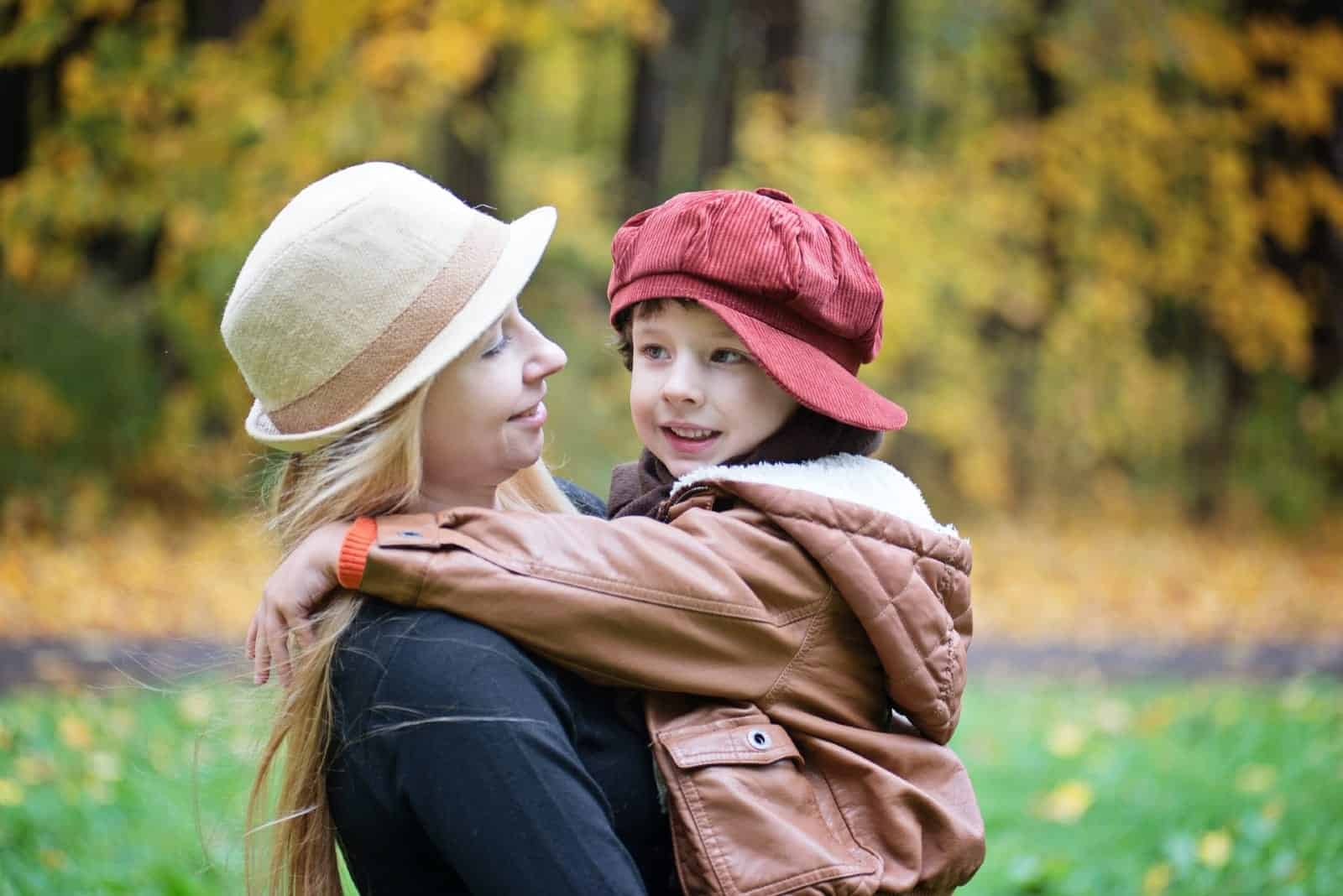Disorganized attachment style is probably the most difficult and unhealthiest attachment style of all. Fortunately, like all others, this insecure attachment can be overcome and healed with proper treatment.
These kinds of attachment patterns develop in our early childhood, most likely because the parents aren’t able to respond appropriately to their child’s needs.
It can also be as a result of different kinds of abuse or traumas in the past. However, the consequences are always the same.
This extreme insecure style affects our mental health, it doesn’t allow us to maintain a healthy relationship with another person and it lowers our self-esteem, leaving us with a negative self-image.
Unfortunately, in most cases, people aren’t even aware they have an attachment disorder.
They can’t cultivate a more secure attachment style because they aren’t even aware of the disorder or they simply don’t want to admit and accept it.
What is a disorganized attachment style?
We’re social beings and we all crave love and connection with another human being. That’s exactly why attachment theory should be important to all of us.
Attachment styles dictate our relationships and how we’ll connect with other people. In most cases, they develop in early childhood, though they can develop later in life, also.
If a child is raised in a healthy, safe surrounding, they’ll probably develop a secure attachment, which will lead them to a good life.
Traumas, abuse and addictions can negatively affect child development. Children raised in such toxic surroundings will probably develop an insecure attachment, which will have a bad impact on their future.
For infants, their primary caregivers are their sources of safety, their “secure base”, and when that changes, when their parents become more nervous or aggressive, children simply feel frightened.
They feel betrayed by their caregivers because, for them, they are the only ones they can lean on and trust.
That’s exactly when the patterns of disorganized attachment (also known as a fearful avoidant attachment) start developing.
Developmental psychologist, Dr. Mary Ainsworth, conducted a research titled “Strange Situation”, and examined how young children behave when their parents leave their room.
Most children cried and were upset, but as soon as their parents came back to the room, they calmed down. Those children had a secure attachment system.
On the other hand, there were those kids who got upset and couldn’t calm down even when their parents came back.
They would continue crying, and some of them were even hitting their parents. This is an insecure attachment style.
Those kids were ‘angry’ with their parents in a way because they were afraid they would leave them alone again.
Van IJzendoorn, Schuengel and Bakermans-Kranenburg conducted a meta-analysis of this kind of attachment, which they published in 1999.
Their study showed that 14% of infants in middle-class status groups, along with 24% of infants in low socio-economic status groups have disorganized patterns of attachment.
Main and Hesse (1990) also agree that the parents’ behavior and past traumas affect children greatly, and it can be associated with psychopathology and other disorders in their adulthood.
If parents have too many unresolved past issues or are dealing with too much stress or have any kind of addiction, they won’t have affective communication with their children, which will lead to attachment disorganization.
In the Adult Attachment Interview, Mary Main, Ph.D., has shown that the key predictor in developing a disorganized attachment relationship between a parent and a child is some unresolved, painful past trauma of the caregiver that lead to the disorganized attachment patterns.
In the Handbook Of Attachment, by J. Cassidy & P. R. Shaver (Eds.), the grades of children with secure, and those with insecure attachment were also researched .
Of course, children with secure attachment had much better grades.
They also found that children of depressed mothers are more likely to develop this kind of attachment pattern.
Similar to their research, a professor of psychology, Dr. Lyons-Ruth K., found that 62% of children of mothers who are chronically depressed (especially single low-income moms) have attachment disorganization.
In an article published in Guilford Press, in 2011, J. Solomon and C. George claim that if a parent has some mental health issues, it can make them psychologically unavailable to their children.
Causes of disorganized attachment style
Early attachment patterns significantly affect the attachment pattern that we’ll shape later in life.
Even though attachment styles change during different stages of life, infant attachment plays a great role in shaping adult attachments.
This is something all parents should pay great attention to. If you develop an organized attachment relationship with your children, they’ll probably keep that attachment style throughout their life.
Predictors and causes of disorganized attachment are numerous, but some of the most significant triggers for this kind of behavior are:
- History of parental maltreatment
- Past trauma
- Painful childhood experiences
- Alcohol or substance abuse
- A lack of emotional support
- Erratic caregiving (when the caregiver seems absent or scary to the child).
- The loss of a loved one (not being able to deal with the loss of their ‘secure base’, their primary attachment figure / caregiver)
- Being betrayed by someone you deeply trusted and honestly loved
Seven Signs of disorganized attachment in adults
Low self-esteem and a negative self-image
People with this kind of attachment were hurt, betrayed or even abused by their loved ones in their past. Those painful and uncomfortable experiences negatively affected their self-esteem.
They have a very poor opinion about themselves. They think they’re unworthy of love because they never got the love they deserve.
Unpredictable behavior
Their erratic behavior makes it harder for them to start and maintain a close relationship with another person.
They’re known for sudden mood swings and angry/psychotic outbursts. Sadly, they aren’t even aware that their unpredictable behavior is a symptom of their insecure disorganized attachment.
Trust issues
Even if they do indulge in a romantic relationship with someone, it’s very difficult for them to build trust with their partners, which is a crucial foundation of every healthy relationship.
They have experienced many bad things in the past, and it all led them to having trust issues. It’s very challenging and difficult for them to get closure from their past and to trust someone again.
Inability to maintain a healthy relationship
These people crave a close relationship with another person; they also want to be loved, but at the same time, they are so afraid to let anyone new in.
Their fear of rejection and intimacy doesn’t allow them to make and maintain a deeper connection with another person.
People with this kind of attachment won’t be able to have a good relationship with their own children.
Their relationship will have disorganized attachment patterns just like the relationship between them and their primary caregivers had.
Fear of intimacy
They do want to be loved and they also crave a close relationship, but they think people won’t accept and like them the way they are, and that fear of rejection and intimacy makes it harder for them to maintain a relationship.
Mental health issues
All professionals agree that this kind of attachment is caused by painful experiences from early childhood. Those bad experiences may lead to some serious mental health disorders.
Depression, anxiety, borderline personality disorder and similar mental health disorders impact the way we think and feel about other people, and also, about ourselves.
They affect the way we connect with other people, too.
Checking out from reality
A person with this kind of attachment may also experience some dissociative disorders, such as a break from reality in specific situations.
They start behaving in an unusual way and use a different tone of voice. Those situations can seem strange or even frightening to other people.
8 Ways to cope with disorganized attachment
Developing a more secure attachment style may be challenging, but it’s not impossible.
If you have noticed that yourself or your loved one has any of these signs above, you should find a coping mechanism before it’s too late… before the disorganized attachment ruins your life.
Improve your self-awareness
First of all, you need to learn to calm down and remain calm in every situation. Practice mindfulness.
Breathe in and breathe out, or let’s say it this way, breathe all your worries and things that are bothering you in, and then breathe them out.
Don’t try to fix your emotions; instead, you should only be trying to understand them. You aren’t broken, so you don’t need to be fixed.
You only need to improve some things in your life… start with improving the relationship you have with yourself.
I know you have some very negative, dark thoughts about yourself and your life. However, you should know that you aren’t your thoughts. You’re way, way better than that.
Don’t criticize yourself that much. Silence the inner critic that is making you think less about yourself. Start realizing your worth and it’ll help you develop a more organized attachment relationship with yourself.
Learn more about attachment theory and styles
If you’re aware that you have a disorganized attachment, you should definitely study a little bit more on the attachment theory in general, what it is, how it affects our lives and how many types of attachments there are.
Disorganized attachment is one of the insecure attachment styles and it’ll definitely have a negative impact on all spheres of your life.
It’ll damage all your close relationships and make you feel like you’re all alone, like there is no person in the entire world that loves you.
If you learn more about attachment theory, then you’ll understand disorganized attachment better and it’ll help you get the right treatment.
Identify sources of disorganized attachment
In order to handle it and start your healing process, you must first understand the triggers of your disorganized attachment problems.
In order to do that, you’ll have to go back to your past, even all the way to your early childhood. Can you recognize what kinds of attachment patterns you had then?
Think about your relationship with your parents. Did you have a healthy relationship with them? Did you grow up in a healthy environment? Think about your other close relationships also.
The only place you’ll find an answer to what triggered your disorganized attachment style is your past.
Face your past traumas and painful memories
We all made some mistakes in the past. We were all once betrayed by someone we deeply loved and cared for.
In order to develop a more secure attachment, you should face your past first, and you need to deal with that trauma in a healthy way.
If something bad happened to you in the past, give yourself time to accept it and heal. Ask for support and talk it over with someone you trust.
Then, let it all go
Whatever happened to you in the past, the most important thing is that it passed. There is no point in overthinking it. Leave it in the past and don’t allow it to affect your life anymore.
Don’t think how it’s going to happen again. Don’t think that just because some people didn’t know to appreciate you, no one else will.
Don’t allow some of those painful past experiences to control your present or ruin your future.
Stop clinging to your past; accept what happened and move on. It’s high time to let go of those painful experiences of the past.
Talk yourself up
Engage in self-care more. Improve your self-image. Your opinion about yourself greatly affects your confidence and self-esteem.
Make that inner voice more optimistic or else silence it completely. Positive self-talk is the most important thing in overcoming disorganized attachment behavior.
Check in with your feelings regularly and always validate them. Give yourself some positive daily affirmations.
Spoil yourself. Surround yourself with positive people only. You don’t need bad vibes and negative energy in life because that will never help you develop a better attachment style.
Let people in
There are always some risks in life… you can never know whom you can trust completely or if some people will betray you in the end. But, taking those risks is also a point of life.
You can’t push people away every time they start getting too close to you. It will make you feel unhappy and unsatisfied about your life.
Silence the subconscious mind that is making you believe that by not letting people in your life, you won’t be hurt or let down ever again.
Trust isn’t something that just happens when you start a relationship with another person. It takes a lot of time to build trust and make a healthy relationship with someone else.
Seek out professional help
Don’t be afraid or feel ashamed to seek help. An experienced clinician can help you recognize and treat your attachment behavior faster.
They’ll probably suggest psychotherapy or some other kind of psychiatric therapy that they consider good for healing your attachment problem.
Summary and key takeaways
Unfortunately, disorganized (fearful-avoidant) attachment is a little bit of a forgotten type of attachment, even though it’s the most extreme type and the most difficult one to deal with.
It has a negative impact on all spheres of your life. It’ll damage all your relationships and it’ll also harm the relationship you have with yourself.
Triggers of this kind of attachment can be mostly found in relationship patterns between the person who’s struggling with it and their primary caregivers.
A person who’s struggling with disorganized attachment doesn’t have any clear goals or dreams.
They’re deeply unsatisfied with their life, and they feel very lonely, even though they’re the ones who don’t allow other people to get close to them.
Remember, if you want to change your life… if you want to live a happier, more fulfilled life, then you have to change your attachment style first!





















